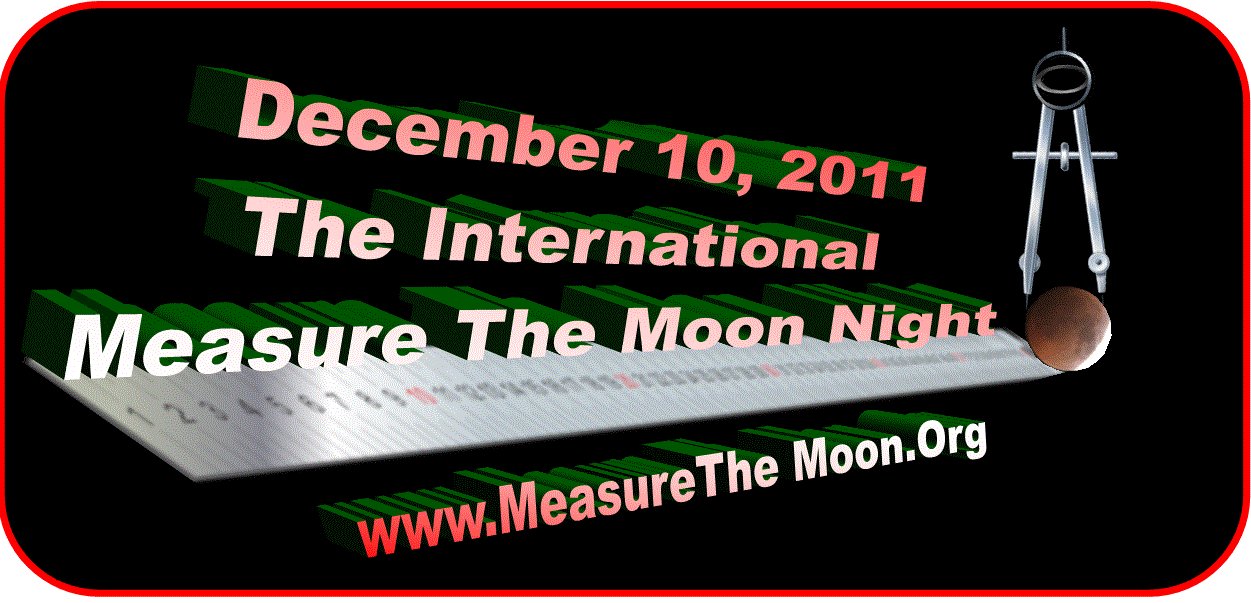Are you planning on watching the lunar eclipse on Saturday, December 10? Would you like to try your hand at doing something new and unusual, like measuring the Moon? Then join the The Classroom Astronomer (TCA) magazine effort by using time-honored techniques – with a modern twist! Step inside and we’ll tell you where to get the information on how it’s done…
During the total lunar eclipse, viewers will be participating by observing the Moon’s location in the sky and its path through Earth’s shadow. These methods, known as the “Shadow Transit Method” and the “Lunar Parallax Method” are techniques that have been used throughout astronomical history.
“The Shadow technique can be done anyplace where the Moon can be watched through the beginning partial, total and end partial phases of the eclipse. It can be recorded by drawing or photography.” says MTM. “The Parallax technique has to be done with two observers sufficiently far apart (we estimate at least 2000 miles (3200 kilometers). It must be recorded with photography and the photographs have to be taken at the exact same time, with a field of view wide enough (4-8 degrees) such that the neighboring stars can be recorded at the same time on both photographs. A comparison of photographs through overlay procedures will show the shift of the stars (or Moon) as seen from one side of Earth to the other. The larger the shift, the closer the Moon.”
The Classroom Astronomer has created a website – MeasureTheMoon.org to help generate interest – for everyone from general observers to classrooms. Think of what a great activity this would make for your public outreach event!
When it comes to the Shadow Transit Method, the website has a downloadable template with lunar illustrations for hand plots of the shadow over the Moon’s face and a timeline sheet for putting those drawings and cut-out of the template into the proper position. A table to calculate the Moon’s distance and size from the resulting plot is also online. More information on the MeasureTheMoon.org website includes a map that shows where on Earth you need to be to use both methods. When the total lunar eclipse has ended, the website will open a venue where you can upload your photos, along with your Moon distance and diameter observations.
Have fun!!
Information provided by Measure The Moon.

